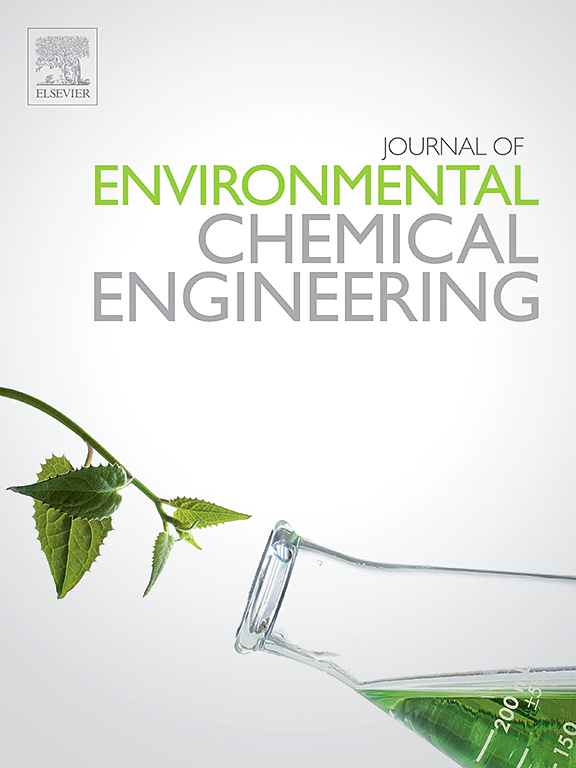纤维素基絮凝剂在微藻絮凝中的应用综述
IF 7.4
2区 工程技术
Q1 ENGINEERING, CHEMICAL
引用次数: 0
摘要
开发绿色和可持续的絮凝剂对于通过藻水分离技术解决有害藻华(HABs)的全球环境挑战至关重要。纤维素基絮凝剂因其生物可降解性、巨大的表面改性潜力、天然丰度和高絮凝效率而受到广泛关注。目前,纤维素在微藻絮凝中的应用主要涉及天然纤维素纤维和纤维素纳米晶体。通过醚化改性和接枝共聚可以有效地提高纤维素基絮凝剂的絮凝性能。然而,微藻的种类、培养基、絮凝剂性能和环境因素都可能影响絮凝效果,因此需要根据具体的应用场景选择合适的纤维素来源和改性方法。本文综述了纤维素基微藻絮凝剂的来源、制备方法、絮凝机理、改性技术以及影响絮凝效果的因素等方面的研究进展。对纤维素基絮凝剂的潜在价值及其面临的关键技术挑战进行了评估,旨在为未来研究和推进纤维素基絮凝剂微藻收获技术提供理论支持。本文章由计算机程序翻译,如有差异,请以英文原文为准。

Application of cellulose-based flocculants in microalgae flocculation: A review
The development of green and sustainable flocculants is critical for addressing the global environmental challenge of harmful algal blooms (HABs) through algal water separation techniques. Cellulose-based flocculants have garnered significant attention due to their biodegradability, substantial potential for surface modification, natural abundance, and high flocculation efficiency. Currently, the application of cellulose in microalgae flocculation primarily involves native cellulose fibers and cellulose nanocrystals. The flocculation performance of cellulose-based flocculants can be effectively enhanced through etherification modification and graft copolymerization. However, microalgae species, culture media, flocculant properties, and environmental factors may influence flocculation efficiency, necessitating the selection of appropriate cellulose sources and modification methods for specific application scenarios. This review examines recent advancements in cellulose-based flocculants for microalgae flocculation, including their sources, preparation methods, flocculation mechanisms, modification techniques, and factors affecting efficiency. The potential value of cellulose-based flocculants and the key technical challenges they face are evaluated, with the aim of providing theoretical support for future research and advancing microalgae harvesting technologies using cellulose-based flocculants.
求助全文
通过发布文献求助,成功后即可免费获取论文全文。
去求助
来源期刊

Journal of Environmental Chemical Engineering
Environmental Science-Pollution
CiteScore
11.40
自引率
6.50%
发文量
2017
审稿时长
27 days
期刊介绍:
The Journal of Environmental Chemical Engineering (JECE) serves as a platform for the dissemination of original and innovative research focusing on the advancement of environmentally-friendly, sustainable technologies. JECE emphasizes the transition towards a carbon-neutral circular economy and a self-sufficient bio-based economy. Topics covered include soil, water, wastewater, and air decontamination; pollution monitoring, prevention, and control; advanced analytics, sensors, impact and risk assessment methodologies in environmental chemical engineering; resource recovery (water, nutrients, materials, energy); industrial ecology; valorization of waste streams; waste management (including e-waste); climate-water-energy-food nexus; novel materials for environmental, chemical, and energy applications; sustainability and environmental safety; water digitalization, water data science, and machine learning; process integration and intensification; recent developments in green chemistry for synthesis, catalysis, and energy; and original research on contaminants of emerging concern, persistent chemicals, and priority substances, including microplastics, nanoplastics, nanomaterials, micropollutants, antimicrobial resistance genes, and emerging pathogens (viruses, bacteria, parasites) of environmental significance.
 求助内容:
求助内容: 应助结果提醒方式:
应助结果提醒方式:


